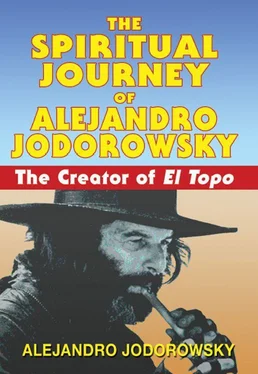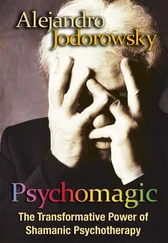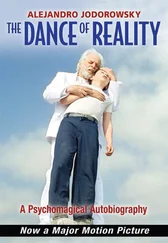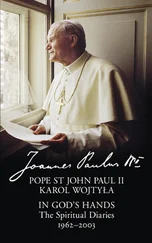Life went on like this for thirty years. There were tea ceremonies, interviews with the roshi when he was given a koan, raking the garden, begging in town for rice or money, communal baths in strict silence, sleeping in winter without heat or wool socks, receiving the ritual blows and remonstrance from the master, the twice-yearly change of clothes: wool in autumn and winter, linen in spring and summer — and the never-ending examinations before senior monks for the purpose of deciding whether he would stay in the monastery or be sent away.
At what point did this orphan child, adolescent, then adult monk realize the awakening that fate had compelled him to seek? Perhaps he saw himself as an instrument protected by the generous arms of the Buddha, to be used by destiny to accomplish a great work. But he must also have been aware that he had no real experience of life in the world (unless he perhaps indulged occasionally in illicit escapades with other young monks, climbing over the walls at night to drink and carouse in a village bar). To have abruptly left this severe monastery for the United States and then to settle in Mexico must have come as an enormous spiritual shock to him. It is difficult to change the habits acquired over a lifetime. Even in a vast, foreign metropolis, Ejo was still enclosed in his Japanese monastery. A life of strict control over his speech and gestures and the discipline of meditation and purification had caused him to lose contact with much of the natural animal tenderness of life. He still knew little of caresses and the pleasure of spontaneous gestures of love.
I decided to offer him the little gray kitten as a gift.
As could be expected in the morning hours, I found Ejo sitting in meditation. I approached slowly and put the little animal between his legs. The kitten immediately settled there, purring, and fell asleep. Ejo sat immobile until the incense stick had burned out. Then he yawned, stretched, smiled, and caressed the kitten’s soft fur.
As he was doing this, he proposed a koan: “One morning, the monks of the eastern hall got into an argument with the monks of the western hall over the possession of a cat. Seeing this, Master Nansen took the animal and a large knife and held them up. ‘If one of you can tell me the meaning of this, I will not cut the cat in two.’ The monks could not reply, so Nansen cut the cat in two. (Here Ejo imitated the harsh sound of a cat dying.) That afternoon, Joshu arrived at the monastery. Nansen told him what happened, asking him for his opinion. Joshu took off one of his sandals, placed it upon his head, and left the monastery. Nansen said: ‘If you had been there, you could have saved the cat.’”
Ejo now made a soft mewling sound, imitating a cat being born. He went to the kitchen and returned with a large knife. Holding the kitten up by the nape of its neck, he said, with an implacable glint in his eye: “If you can tell me the meaning of this, I will not cut it in two.”
I began to sweat and breathe hard. I felt as if I would suffocate. What were Nansen and Ejo talking about when they said the meaning of this? Did holding the cat up with the knife mean that life and death are the same thing? Or did this refer to the illusory, dreamlike reality in which we believe we exist? Or did it refer to the illusory I , disputing possession of something equally illusory? Or was it the emptiness beyond words? And why that absurd sandal on the head and Ejo’s two cries imitating the death and birth of the kitten?
Seeing my state of incertitude, Ejo escalated the pressure on me by raising the knife, as if to give a fatal blow. The kitten began to meow in protest.
I lost control. Leaping upon Ejo, I grabbed his hand, forcing him to drop the knife, pushing him to the ground, and wresting the cat away from him. Holding it protectively against my breast, I backed away, horrified. To me, this act had been a sacrilege. In that moment, the Buddha had been knocked off his pedestal and my mystical illusions were shattered into a thousand pieces. My friendship with this monk was obviously at an end. I was certain that when he had recovered, he would formally expel me from the zendo.
Old, painful memories were surging through my mind like an irresistible flood. On my fourth birthday, a neighbor had given me a beautiful, gray cat named Pepe. This animal and I established a deep love. He became as attached to me as a dog, came when I called him by his name, and sat waving his paws in the air when he wanted me to share my food with him. He played with me often, never using his claws on me, and spoke to me in a language of meows that I understood. Every night, he came to sleep with me, snuggling under the sheets.
My father was convinced that cats who breathe near the face of a child transmit tuberculosis. One day he killed him in the garden, putting a bullet through his head. My happiness with Pepe had lasted only six months. Only four and a half years old, I found out how empty the world becomes when a beloved friend dies — or rather, how full of his absence the world becomes. This sadness flowed right through the marrow of my bones, and I harbored an impotent bitterness toward Jaime, my father.
Now, even with my sense of guilt at having physically attacked my master, I could smile with relief. I had accomplished something of which I was incapable as a child: saving my cat’s life.
And then, to my utter astonishment, I watched Ejo get up from the ground, grinning from ear to ear. He stood in front of me and exclaimed: “You resolved it! When Nansen spoke of this , inviting the affirmation that there is no difference between life and death, Joshu put his sandal on his head, ridiculing the ability of the intellect to resolve it. And you also did this, putting ordinary reality in your mind. Because you love the cat, you wrested it from my hands. Joshu was also saying that if you have to kill cats to lead your monks to awakening, your Zen makes no sense. Kwatsu! Kwatsu! Kwatsu! What joy! Life is only a fleeting dream, yet a living cat is not the same as a dead cat!” And then he embraced me heartily, bursting with laughter and compelling me to do a little dance with him.
I was still holding on to the cat, which was purring contentedly. I felt a certain reticence even as I participated in this merriment. Perceiving this, Ejo took the cat from me gently, murmuring “Arigato,” and caressed it with surprising tenderness. Then I followed him into the kitchen, where he give it a bowl of milk. Looking around this impeccably clean and ordered room, I could not help feeling that every object in it exuded the sadness of an orphan. The joy of a little kitten lapping milk only accentuated the coldness of the atmosphere there.
I could not help blurting out: “Ejo — I think you need a wife.”
“It’s true!” he exclaimed, stretching his left hand toward the ceiling, making a fist.
The next day he took a plane to Japan to search for a companion.

“Every man you hang requires a different technique. It all depends on his physique.”
SILVER KANE, VERDUGO A PLAZOS
(EXECUTIONER ON CREDIT)
The forty days that my master was absent made me realize how important his presence was for me. I needed him near me to verify all my words. Without his counsel, I had the feeling that my footprints were already erased before I even took my steps.
None of us students were really sure that he would return from Japan. Considering the poverty of his life in Mexico (he lived mostly on vegetables, fruits, and fish that he scrounged from leftovers at the market) and the small number of his disciples, it sometimes appeared absurd that he would come back. Nevertheless, to remain in communion with his spirit, we continued our daily practice at the zendo.
Читать дальше













